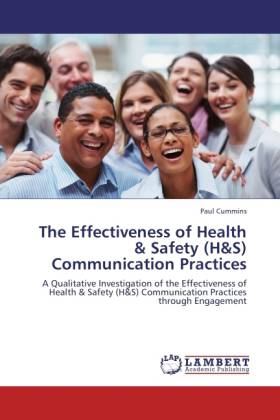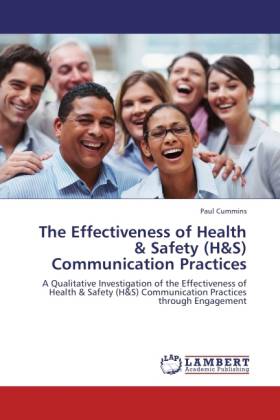
- Afhalen na 1 uur in een winkel met voorraad
- Gratis thuislevering in België vanaf € 30
- Ruim aanbod met 7 miljoen producten
- Afhalen na 1 uur in een winkel met voorraad
- Gratis thuislevering in België vanaf € 30
- Ruim aanbod met 7 miljoen producten
Zoeken
The Effectiveness of Health & Safety (H&S) Communication Practices
A Qualitative Investigation of the Effectiveness of Health & Safety (H&S) Communication Practices through Engagement
Paul Cummins
Paperback | Engels
€ 48,45
+ 96 punten
Omschrijving
Health and Safety is a key issue in any organisation and never more so than in our current recessionary climate where a general claim culture has increased and the incident rate is higher and more costly than ever. But how do business's deal with this issue? Do they continue to use the same traditional approach, where confusing text-rich H&S documentation is given to employees and expected to keep them safe at work? This approach ticks the compliance box but does it really work, does it really keep people safe in their area of work? This research by Paul Cummins explores the traditional approach using qualitative methods of investigation within an anonymous retail chain. Important areas of H&S at work are touched upon particularly within an extensive review of past research in H&S practice. An alternative to the traditional approach is then presented, where the focus is on the employees themselves, the job they do every day, communicating best practice effectively and efficiently, and empowering people to take responsibility for their own safety at while at work.
Specificaties
Betrokkenen
- Auteur(s):
- Uitgeverij:
Inhoud
- Aantal bladzijden:
- 68
- Taal:
- Engels
Eigenschappen
- Productcode (EAN):
- 9783845444314
- Verschijningsdatum:
- 14/09/2011
- Uitvoering:
- Paperback
- Afmetingen:
- 150 mm x 220 mm
- Gewicht:
- 120 g

Alleen bij Standaard Boekhandel
+ 96 punten op je klantenkaart van Standaard Boekhandel
Beoordelingen
We publiceren alleen reviews die voldoen aan de voorwaarden voor reviews. Bekijk onze voorwaarden voor reviews.











